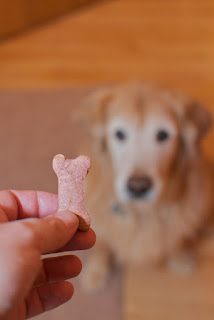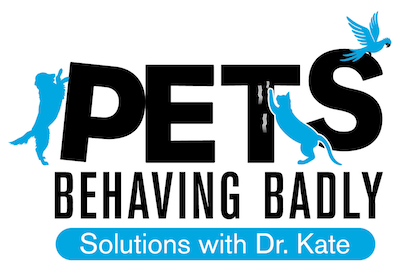Although many small dog owners tolerate their dog jumping up on them, a large dog is a different story. In their exuberance, heavy dogs with big paws and claws (and big teeth!) can cause bruising and damage to clothing. Most visitors to the home don't appreciate being jumped and slobbered on either, even if they assure you it's ok.
So, why do dogs jump up on people? The short answer
is; because the behaviour has been reinforced (rewarded) in the past.
All behaviour is driven by consequences. Animals
repeat behaviours that have a desired consequence. Conversely, they tend to
avoid repeating behaviours that have an unpleasant consequence. Animals
continually change their behaviour to do what's most reinforcing for them,
based on their unique likes and dislikes, wants and needs, in any given situation.
When it comes to jumping up most people respond to
the behaviour in (variations of) one of three ways: 1) They pat and greet the
dog, 2) People who are scared of dogs might squeal or yell and put their hands
in the air moving erratically or 3) They scold the dog telling it to stop/get
down and/or push it away.
Not all people will respond the same way to any one
dog that jumps up and therefore a dog is likely to get a mix of responses to
the behaviour. For many dogs, being told off or pushed away still reinforces
the behaviour because it's still attention, even though it's intended as a
punishment. Furthermore, if the consequence of
jumping up is inconsistent; sometimes rewarded, sometimes punished, sometimes
resulting in an exciting reaction this is known as intermittent reinforcement which will result
in the jumping up behaviour continuing.
How to stop your dog jumping up
To stop your dog from jumping up when you or your
guests enter your home you must remove all reinforcement for the behaviour
(i.e. attention, reaction). More importantly, you need to teach your dog what
you want them to do instead (e.g. sit calmly or have four paws on the floor) by
consistently reinforcing the desired behaviour.
Have some of your dogs favourite treats on hand
when you arrive home or when guests come over. It's best to practice this exercise with your dog several times yourself, so he understands what's expected, before it's attempted with visitors.
When you come through the door immediately ask your dog to sit and show him you have treats (this will make him more likely to comply). As soon as he sits, reward the behaviour with a treat and praise. Take a few steps and ask for another sit or reward your dog if he hasn't jumped up. As soon as he does jump up on you turn your back and completely ignore him. Don't tell him off, don't even look at him. Pretend as though he's not even there. As soon as he stops jumping turn to him and reward four paws on the floor or ask him to sit and reward the sit. Repeat as necessary.
It's critical that the consequences for your dog's jumping up and sitting are immediate - As soon as he jumps up he's ignored (unpleasant consequence). As soon as he sits, he gets a treat, pat and praise (pleasurable consequence). With consistency and repetition your dog will change his behaviour to do what works (sit calmly when you or guests enter the house) because that behaviour results in the things your dog desires (treats, praise, pats) whereas jumping up results in being ignored.
 |
| Image credit: Pete Markham via Flickr |
When you come through the door immediately ask your dog to sit and show him you have treats (this will make him more likely to comply). As soon as he sits, reward the behaviour with a treat and praise. Take a few steps and ask for another sit or reward your dog if he hasn't jumped up. As soon as he does jump up on you turn your back and completely ignore him. Don't tell him off, don't even look at him. Pretend as though he's not even there. As soon as he stops jumping turn to him and reward four paws on the floor or ask him to sit and reward the sit. Repeat as necessary.
It's critical that the consequences for your dog's jumping up and sitting are immediate - As soon as he jumps up he's ignored (unpleasant consequence). As soon as he sits, he gets a treat, pat and praise (pleasurable consequence). With consistency and repetition your dog will change his behaviour to do what works (sit calmly when you or guests enter the house) because that behaviour results in the things your dog desires (treats, praise, pats) whereas jumping up results in being ignored.
Consistency is key and this means having ALL
people who come to your house respond in the same way. If this doesn't happen,
the risk is that jumping will be intermittently reinforced, and the behaviour will persist. If you're having guests over and you can't do the training it's
best to put your dog in another area of the house to ensure that jumping up
isn't accidentally reinforced.
Why not go a step further and teach your dog to go to their bed (or a
mat), and stay there until released, when you come home, visitors arrive or
when the doorbell rings? For step-by-step instructions on how to train this
behaviour, read this article.


